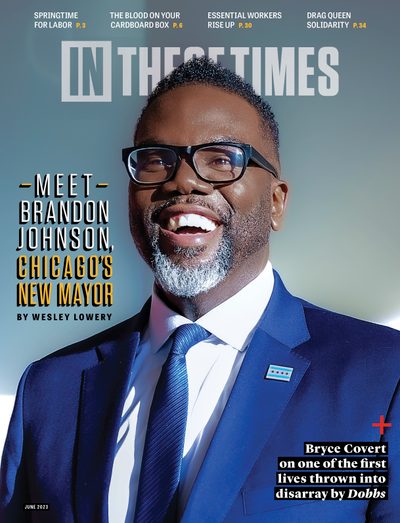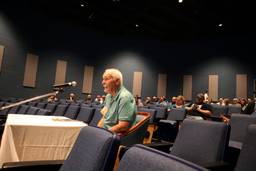
As I write, workers at a Trader Joe’s in Oakland, Calif. just voted on whether to unionize, the fourth Trader Joe’s to do so so within the past year. And recently, Starbucks Workers United unionized its 300th location — all 300 organized in fewer than 18 months.
Something is happening here.
The same day the 300th Starbucks unionized, 340,000 members of the International Brotherhood of Teamsters began negotiating their new contract with UPS. It’s the first big test of the Teamsters’ new president, Sean O’Brien. The rank-and-file’s frustration with the prior leadership’s imposition of the current contract drove O’Brien’s victory.
Also that same day, 11,500 members of the Writers Guild of America voted 98% in favor of a strike should their negotiations break down with the major movie and television studios. In an era of nonstop corporate media consolidation, workers are united to protect standards and workforce diversity.
On April 13, Tennessee State Rep. Justin Pearson — whom Republicans had expelled for participating in a peaceful protest on the House floor in favor of gun law reform, an action Republicans claimed was “at least equivalent, maybe worse” than the January 6 attack on the Capitol — was unanimously reappointed by the Shelby County Board of Commissioners. Fellow Rep. Justin Jones was similarly reappointed days prior by the Metropolitan Council of Nashville and Davidson County.
A few weeks before that, the final votes were tallied in the first-ever direct membership vote for the leadership of the United Auto Workers (UAW). The UAW’s newly elected president, Shawn Fain, has promised to chart the rebirth of a militant, fighting union in time for its contract talks this summer and fall with the Big Three automakers. What’s at stake is no less than the future of auto manufacturing in the United States: unionized production of electric vehicles.
On April 4, exactly 55 years after the assassination of Martin Luther King Jr., Chicagoans elected as their mayor a Black former middle school teacher and union organizer, Brandon Johnson. In his victory speech, Johnson made that connection: “It was right here in the city of Chicago that Martin Luther King Jr. organized for justice, dreaming that one day that the civil rights movement and the labor rights movement will come together. Well, Reverend Martin Luther King Jr., the civil rights movement and the labor rights movement have finally collided.”
Meanwhile, voters in Kansas City, Mo., sent two tenant organizers to the general election for city council. According to Mayor Quinton Lucas, it could become “the most progressive city council that we have seen in Kansas City’s history.” In Wisconsin, women and young people powered the election of a Democratic majority to the state Supreme Court as the right to reproductive health hangs in the balance. In St. Louis, voters re-elected a democratic socialist as president of the Board of Aldermen, along with a former fast-food worker and leader of the Fight for $15 to sit on that board with her.
What’s happening here is that the power built by organized people is playing out on stages large and small across this country.
The labor movement, the civil rights movement and all people’s movements for social and economic justice need each other, and now. Yes, we face dangers and setbacks as authoritarianism continues its march — but we can see the outlines of another future if we connect the dots. In These Times was founded almost 50 years ago to help do just that, to bring democratic socialism to new audiences and to build a new majority to bend power toward the people.
The connections and parallels might not always be clear, but they are there — waiting for their moment to emerge and catalyze us all to further collective action.
Alex Han is Executive Director of In These Times. He has organized with unions, in the community, and in progressive politics for two decades. In addition to serving as Midwest Political Director for Bernie 2020, he’s worked to amplify the power of community and labor organizations at Bargaining for the Common Good, served as a Vice President of SEIU Healthcare Illinois and Indiana for over a decade, and helped to found United Working Families, an independent political organization in Illinois that has elected dozens of working-class leaders to city, state and federal office. Most recently he was executive editor of Convergence Magazine.









